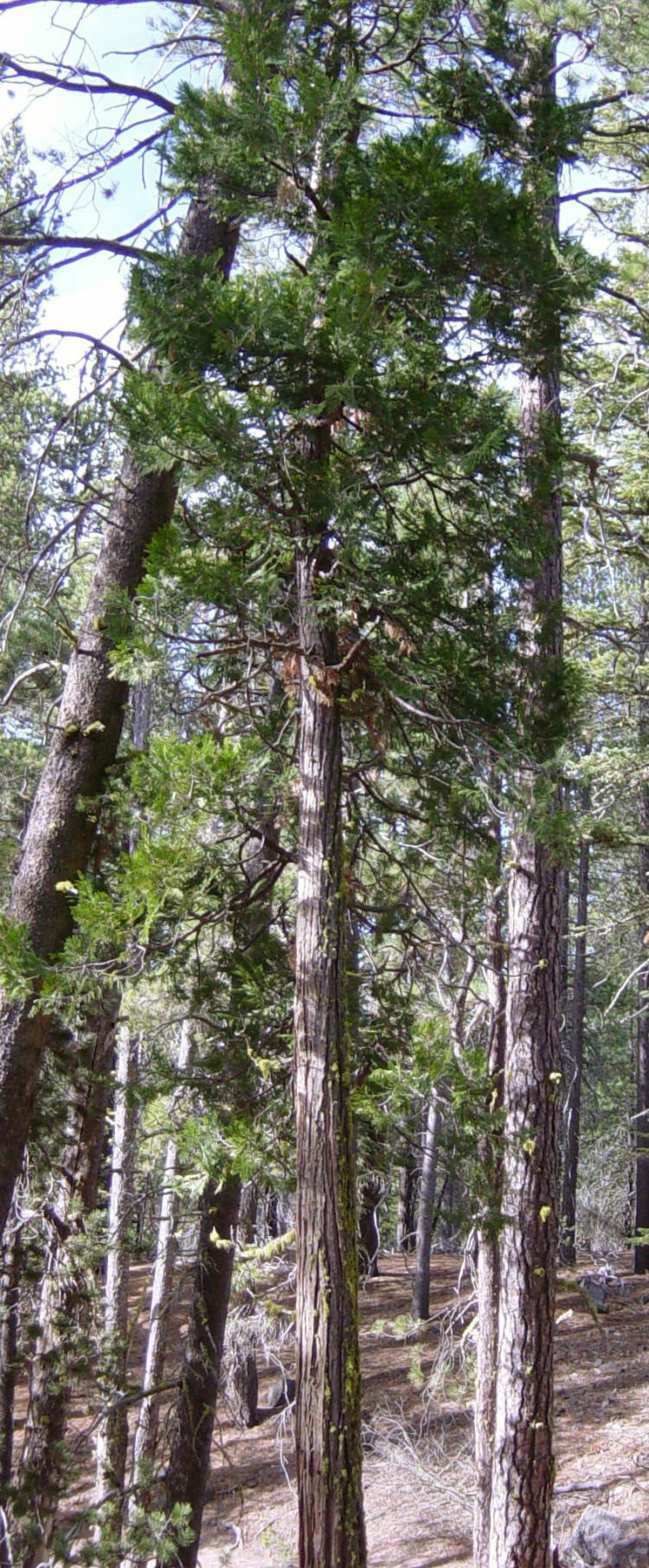Incense Cedar on:
[Wikipedia]
[Google]
[Amazon]
 ''Calocedrus'', the incense cedar (alternatively spelled incense-cedar), is a
''Calocedrus'', the incense cedar (alternatively spelled incense-cedar), is a
Arboretum de Villardebelle - cone photos
* {{DEFAULTSORT:Calocedrus Decurrens Trees of the Western United States Trees of China Trees of the Northwestern United States Trees of the Southwestern United States Flora of the Sierra Nevada (United States) Garden plants of North America Drought-tolerant plants Conifer genera
 ''Calocedrus'', the incense cedar (alternatively spelled incense-cedar), is a
''Calocedrus'', the incense cedar (alternatively spelled incense-cedar), is a genus
Genus ( plural genera ) is a taxonomic rank used in the biological classification of living and fossil organisms as well as viruses. In the hierarchy of biological classification, genus comes above species and below family. In binomial n ...
of conifer
Conifers are a group of cone-bearing seed plants, a subset of gymnosperms. Scientifically, they make up the division Pinophyta (), also known as Coniferophyta () or Coniferae. The division contains a single extant class, Pinopsida. All ex ...
ous tree
In botany, a tree is a perennial plant with an elongated stem, or trunk, usually supporting branches and leaves. In some usages, the definition of a tree may be narrower, including only woody plants with secondary growth, plants that are ...
s in the cypress family Cupressaceae first described as a genus in 1873. It is native to eastern Asia and western North America.
The generic name ''Calocedrus'' means "beautiful cedar".
Description
The genus is related to the '' Thuja'', and has similar overlapping scale-leaves. ''Calocedrus'' differs from ''Thuja'' in the scale leaves being in apparent whorls of four (actually opposite decussate pairs like ''Thuja'', but not evenly spaced apart as in ''Thuja'', instead with the successive pairs closely then distantly spaced), and in the cones having just 2–3 pairs of moderately thin, erect scales, rather than 4–6 pairs of very thin scales in ''Thuja''.Species
Extant Species
Extinct Species
Uses
Bows and Arrows
Incense cedar was one of the favored varieties of wood used to make bows by Native Americans in California. Like Juniper, and Pacific Yew, the other two coveted bow woods among Pacific Natives, this wood has excellent flexibility and compression strength-weight ratio. When backed with sinew, it produces extremely flexible, fast, hard-hitting bows, which are rivaled only by horn-sinew composite bows for their ability to store and release elastic energy. The archer Saxton Pope observed that Ishi used this wood to produce short bows.Lumber
Thewood
Wood is a porous and fibrous structural tissue found in the stems and roots of trees and other woody plants. It is an organic materiala natural composite of cellulose fibers that are strong in tension and embedded in a matrix of ligni ...
of ''Calocedrus'' is soft, moderately decay-resistant, and with a strong spicy-resinous fragrance. That of ''C. decurrens'' is the primary material for wooden pencils, because it is soft and tends to sharpen easily without forming splinters. The two Asian species were (at least in the past) in very high demand for coffin manufacture in China, due to the scent of the wood and its decay resistance. It is likely that past over-exploitation is responsible for their current rarity.
Incense cedar was the preferred hearth board of the Native Peoples of Northern California
Northern California (colloquially known as NorCal) is a geographic and cultural region that generally comprises the northern portion of the U.S. state of California. Spanning the state's northernmost 48 counties, its main population centers incl ...
for lighting fires by friction.
Cultivation
''Calocedrus decurrens'', the California incense cedar, is a popularornamental tree
Ornamental plants or garden plants are plants that are primarily grown for their beauty but also for qualities such as scent or how they shape physical space. Many flowering plants and garden varieties tend to be specially bred cultivars that ...
, grown particularly in locations with cool summer climates like Britain, Washington and British Columbia
British Columbia (commonly abbreviated as BC) is the westernmost Provinces and territories of Canada, province of Canada, situated between the Pacific Ocean and the Rocky Mountains. It has a diverse geography, with rugged landscapes that include ...
. Its very narrow columnar crown in landscape settings, an unexplained consequence of the climatic conditions in these areas, is not shown by trees in their native 'wild' habitat
In ecology, the term habitat summarises the array of resources, physical and biotic factors that are present in an area, such as to support the survival and reproduction of a particular species. A species habitat can be seen as the physical ...
. The California incense cedar is also valued for its drought
A drought is defined as drier than normal conditions.Douville, H., K. Raghavan, J. Renwick, R.P. Allan, P.A. Arias, M. Barlow, R. Cerezo-Mota, A. Cherchi, T.Y. Gan, J. Gergis, D. Jiang, A. Khan, W. Pokam Mba, D. Rosenfeld, J. Tierney, an ...
tolerance. The Asian species are rarely cultivated.Munz, P. A. 1974. Flora of Southern California 1–1086. University of California Press, Berkeley.
References
External links
Arboretum de Villardebelle - cone photos
* {{DEFAULTSORT:Calocedrus Decurrens Trees of the Western United States Trees of China Trees of the Northwestern United States Trees of the Southwestern United States Flora of the Sierra Nevada (United States) Garden plants of North America Drought-tolerant plants Conifer genera